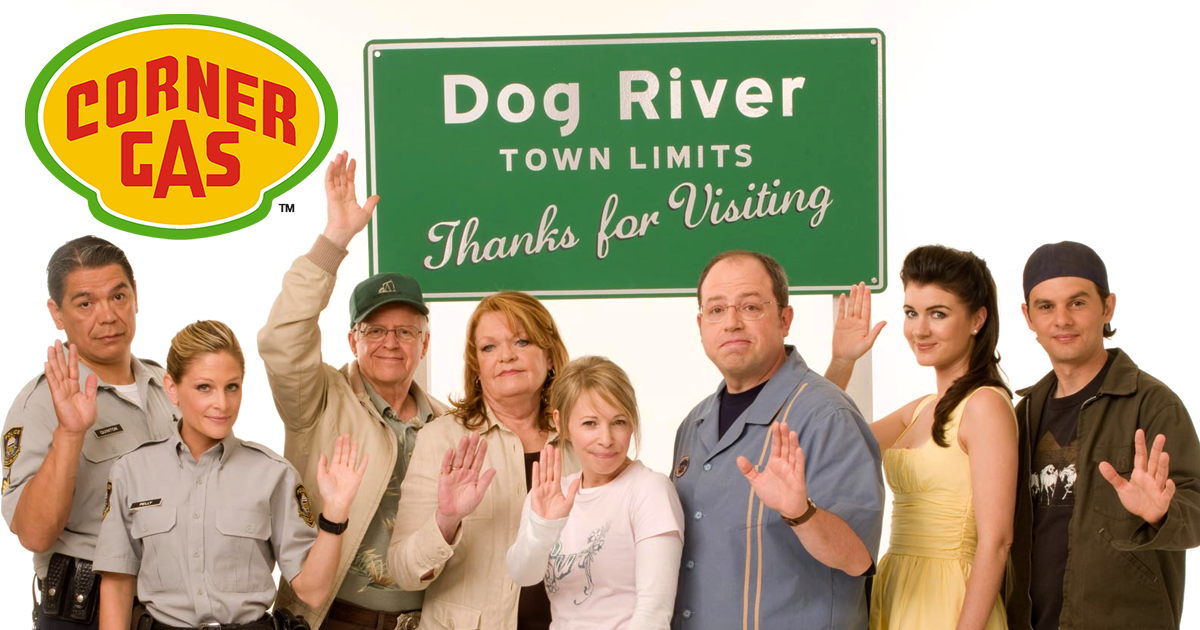 By John Matonich
By John Matonich
I have been enjoying a series on Amazon TV recently. It’s called “Corner Gas” and features a gas station and restaurant in Dog River, Saskatchewan, Canada. The characters are solid and the show was called one of Canada’s funniest when it was on Canadian TV. My bride and I both enjoy the humor and the story lines. We typically tune it in after our 2 nightly episodes of Perry Mason on fetv. This is another show we both enjoy watching.
One of the episodes of “Corner Gas” really got me thinking or perhaps it was more about remembering. One of the characters named Hank came into the station and asked the owner of the station, Brent, how tall he was. Brent who is the lead character and creator of the show answered 5-9. Hank then went on to say that even  though Canada has been on the metric system since the beginning of time, people he spoke with still answered the height question using the system that is dominant in the country to the south.
though Canada has been on the metric system since the beginning of time, people he spoke with still answered the height question using the system that is dominant in the country to the south.
I thought that was an interesting observation. I went to college with a few folks from our neighbor to the north and have met several good people from Canada throughout my life, but I don’t think we ever got into a conversation about height let alone the metric system.
I remember over the years the number of times the metric system took center stage and the push was on to change those of us in the USA over to it. There was actually quite a bit of traction in the early nineties so much so that the Michigan Department of Transportation actually did switch over their survey, design and construction projects to metric. I remember my old firm doing both large survey projects as well as design engineering projects using the metric system. The DOT said they needed to lead by example and demonstrate how much better the system would be.
It really didn’t work very well and subsequently only lasted a few years. I remember one of the larger problems was that the much of the suppliers’ equipment was geared to English units and they weren’t too enthused about spending the countless dollars to convert or build new. This meant we didn’t specify metric pieces such as pipe. We were directed to convert the regular English sizes to metric and specify those. So a 12” diameter pipe simply became a 30.48 centimeter pipe.
Another problem encountered were all the folks who spent years building our infrastructure using feet, inches or tenths of inches really weren’t pleased with trying to learn a new system especially when they were still placing the same pipe in the ground they did a year earlier except the grade was in centimeters.
This was the beginning of the end for the metric system in DOT construction projects and only a few years into it, the transition was abandoned. To be honest with you, I was happy to see it go. I know how much easier it is supposed to be to use once you get used to it, but I like the system we have. I believe we do pretty well with it even though very little of our system can be evenly divided by 10.
I think if there ever is another push to convert over, I will ask to meet with those in charge and my first question will be to ask how tall they are. If Hank is right, they will answer using our system which should be enough to cancel out the conversion effort right there and life will be simple once again.
And that’s the situation as I survey it …
After a 35-year career downstate livin’ amongst da trolls, during which he built a successful engineering and surveying business, John Matonich is back home in da U.P. His column will appear here occasionally, don’tcha know. His book “Surveyin’ Da Situation” is available on Amazon.com.




For a fascinating read about the history of the surveying of America, in particular the Northwest Territory, and the story of the metric system, see Andro Linklater’s “Measuring America: How the United States was Shaped by the Greatest Land Sale in History.” The United States was almost one of the first countries to adapt the metric system. It was a high priority for Washington and Jefferson, but Congress was another matter. Great for book clubs!
Here’s the Amazon link:
https://www.amazon.com/Measuring-America-United-Greatest-History/dp/0452284597/ref=pd_lpo_sbs_14_img_0?_encoding=UTF8&psc=1&refRID=BNPS5YD65GJXXWY1JPC8
By the way, when the metric system was created in the late 18th century it had a competitor – the dozenal system, or base twelve, in which fractions are easier. Think of a dozen eggs, and a half, third, fourth, or sixth of that dozen. Nice whole numbers, whereas a third of ten is 3.3333333333….
Here’s a link to a Numberphile video on this:
https://www.youtube.com/watch?v=U6xJfP7-HCc
Any book about Surveying has to be a good one. Thanks for the tip…
Are Celsius temperatures part of the metric system? The people who use metric mostly seem to use Celsius as well. Temperature is an extremely current topic. I have learned to convert after a fashion.
You need to start with the number of degrees above or below Freezing. For example, 34 degrees is two degrees above Freezing in the US. Then divide two US degrees in half. So, 34 degrees Fahrenheit is 1 degree Celsius.
The other way around, you need to multiply by two. 2 degrees Celsius is 34 degrees Fahrenheit. Freezing plus two Fahrenheit = Freezing plus one Celsius. We are dealing with degrees above or below Freezing, rather than plain degree numbers.
The actual conversion fractions are 5/9 and 9/5. But, these are very close to 1/2 and 2. Do not worry about the difference, for quick conversions.
This works for me. Is it too detailed for general use?
Matt,
SI has defined 7 base units: metre, kilogram, second, ampere, kelvin, mole, candela. All other measurements can be derived from those. Degrees Celsius is a coherent derived unit (being that a temperature difference of X °C is the same as a difference of X K).
I do think your method is a bit too detailed as it requires performing two arithmetic operations and, more critically, doing them in the proper order. I wouldn’t expect the average person on the street to be able to handle that.
For people who just need rough estimates, variants on “30 is hot, 20 is nice; 10 is cold, and 0 is ice” may suffice. Those numbers also have the convenient feature of having nice memorable Fahrenheit conversions: 86, 68, 50, and 32 respectively, and any values in between are easily guessed at. Heat wave? Likely over 30. People ending up in hospitals? Could be 40! Balmy spring day? Seems 20ish. Time for a warm coat? Sounds like 10.
Do you know that the US is the only country in the entire world that tried metrication and FAILED, and is the only industrial country using non-metric measurements.
Also, a lot of American industry has metricated. They have manufacturing plants all around the world and advertise their product sizes in kilograms, metres, or centimetres abroad and US units at home.
In my country, Australia, only my parents’ generation (and I am in my mid-60s,) talk about feet, inches, pounds, pints, and gallons.
What the US failed to do with metrication is to complete it. Prior to 1970, 99.99 % of the US economy was completely USC. After the metrication efforts of the 1970s, the US is somewhere stuck in the middle. No survey has ever been conduced (maybe out of fear of the results) but it is far from 99.99 % USC.
All of the major US manufacturing companies are fully metric and have a policy towards their suppliers that “”You will use metric, or my next supplier will. “. This is especially true in the automotive industry, heavy machinery and all new technologies, etc.
Dollar-wise, industry is more than 50 % metric. Even though some people think that by stopping metrication American exceptionalism was saved, what it did was create a house divided against itself. Those companies operating in metric don’t purchase parts and services from those that don’t. It is much less stress to simply buy from a company that works and communicates in metric.
American engineers are virtually the only engineers that waste huge amounts of time and money converting units back and forth and making costly mistakes along the way. NASA for years continued to use inch designs until in 2009 they were forced to subcontract future work to SpaceX, which uses metric. India and China are able to design in metric space craft that can go to the Moon and Mars at 10 % the cost.
China and Russia are able to design and make metric military equipment superior to anything the military-industrial complex can come up with at a much lower cost.
The US is a dying empire and no amount of Trump’s rhetoric is going to reverse it. In fact it is going to accelerate the demise of the US. Not being metric and worse having a negative anti-metric attitude is a sure recipe to have your products sanctioned by the international business world.